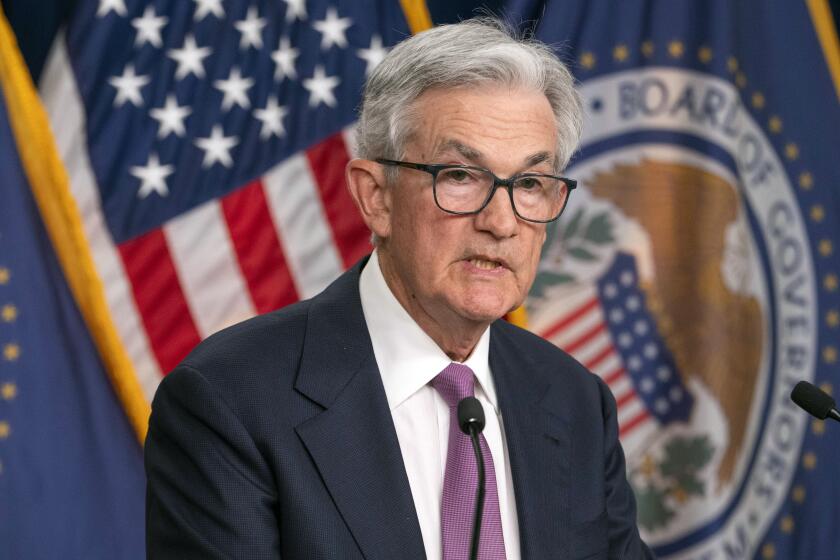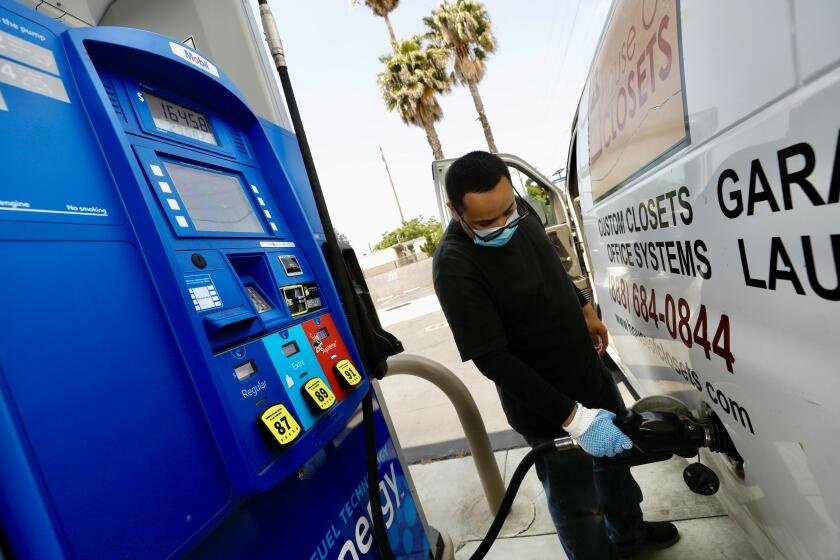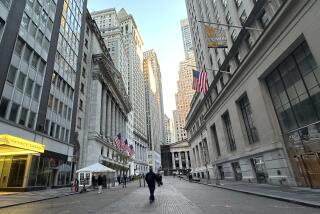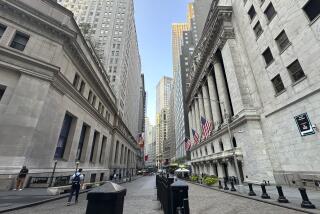Wall Street’s rally runs out of gas as bond yields jump
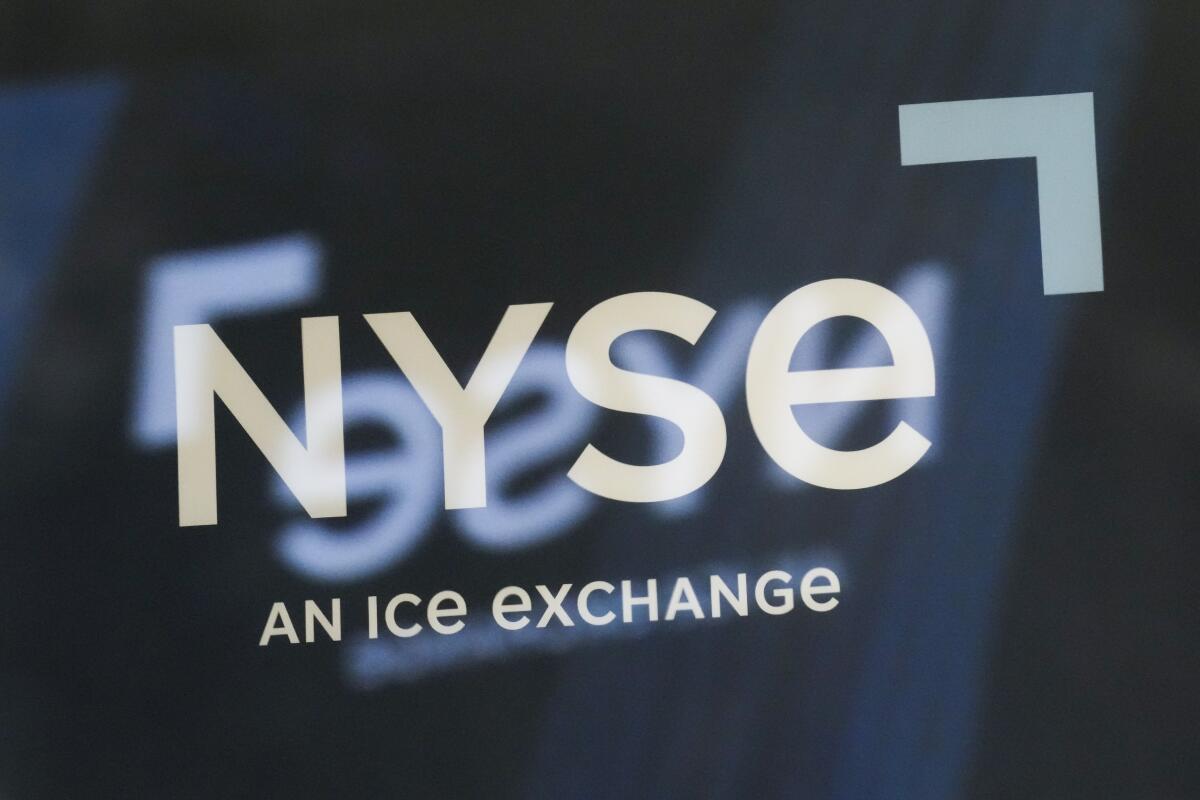
- Share via
Stocks fell Thursday, taking some air out of Wall Street’s big recent rally, despite fatter-than-expected profit reports from big companies and the latest signals of a resilient economy.
The Standard & Poor’s 500 sank 29.34 points, or 0.6%, to 4,537.41 after touching its highest level in nearly 16 months during the morning. The Dow Jones industrial average also flipped from an early gain to a loss and dropped 237.40 points, or 0.7%, to 35,282.72. The Nasdaq composite fell 77.17 points, or 0.5%, at 14,050.11.
Honeywell International was a heavy weight on the market despite reporting stronger profit for the spring than analysts expected. It dropped 5.7% after its revenue fell short of analysts’ expectations, as did its forecast for earnings in the current quarter.
The dip for Wall Street put a halt to a torrid run in which the Dow climbed for 13 straight days. It was up as many as 125 points Thursday morning and seemed to be on the verge of tying a win-streak record set in 1897, before it ran out of momentum.
Stocks have been roaring on hopes the Federal Reserve can pull off what earlier seemed like a long-shot bet: successfully pulling down high inflation by raising interest rates without sending the economy into a painful recession.
But critics have been saying that the market’s sharp move upward has been too much, too fast and that the seemingly growing consensus about a “soft landing” for the economy is hardly a certainty.
“The move is very explainable, but I stop short of calling it justifiable because I think it’s too early to go all in on the idea that the Fed can claim victory” over high inflation, said Bryant VanCronkhite, managing director and senior portfolio manager at Allspring Global Investments.
“We still have to be humble about our ability to predict the long-term effects of what we’re living through, including the rapid rise in interest rates and recovery from a pandemic that forced massive changes in the labor force and supply chains.”
Reports about the economy on Thursday were mostly encouraging, but VanCronkhite said they could also keep the pressure up on inflation. Strong data on the job market in particular could mean U.S. households will keep spending, encouraging companies to keep raising prices. That in turn could push the Federal Reserve to keep interest rates higher than expected, keeping alive the threat of a recession.
In the bond market, Treasury yields rallied after a wave of reports indicated the economy is in stronger shape than expected.
The Fed lifts its benchmark short-term rate to 5.3% — its highest level since 2001. Higher costs for mortgages, auto loans and credit cards may follow.
One estimate said growth for the overall economy accelerated in the spring. That easily topped forecasts from economists, who were expecting a slowdown from the first three months of the year. That report also suggested a measure of inflation wasn’t as high from April through June as expected.
Another report, meanwhile, said that fewer workers applied for jobless benefits last week. It’s the latest indication that the job market remains solid, while another report showed orders for long-lasting manufactured goods strengthened more than expected last month.
All the data helped keep Wall Street ebullient amid hopes the economy can keep defying predictions for a recession despite much higher interest rates.
The Federal Reserve on Wednesday raised its federal funds rate to its highest level in more than two decades in hopes of dragging inflation lower. High rates work by slowing the entire economy, pulling down prices for stocks and other investments.
Fed Chair Jerome H. Powell on Wednesday, though, said any further increases in rates will depend on what reports say about the path of inflation and the economy in the future. That bolstered hopes among traders that Wednesday’s increase may have been the final one of this cycle. Powell also said the Fed’s staff is no longer forecasting a recession.
Mixed signals — including layoffs, strong job growth and lingering inflation — have clouded the U.S. economic outlook.
The yield on the 10-year Treasury rose to 4% from 3.98% late Wednesday. It helps set rates for mortgages and other important loans.
The two-year Treasury yield, which moves more on expectations for the Fed, rose to 4.92% from 4.85%.
Thursday’s drops for stocks came despite a stronger-than-expected earnings report from Meta Platforms, one of Wall Street’s most influential stocks. The owner of Facebook, Instagram and WhatsApp attracted additional active members, and its stock rose 4.4%.
McDonald’s rose 1.2% after it easily topped analysts’ forecasts for profits during the spring and its sales grew worldwide.
Stocks climbed in Europe after the European Central Bank raised interest rates and left unanswered whether more increases are coming. The French CAC 40 jumped 2.1%, and Germany’s DAX returned 1.7%.
Asian stock indexes were also mostly higher, led by a 1.4% rally for Hong Kong’s Hang Seng.
AP writers Matt Ott and Elaine Kurtenbach contributed to this report.
More to Read
Inside the business of entertainment
The Wide Shot brings you news, analysis and insights on everything from streaming wars to production — and what it all means for the future.
You may occasionally receive promotional content from the Los Angeles Times.
